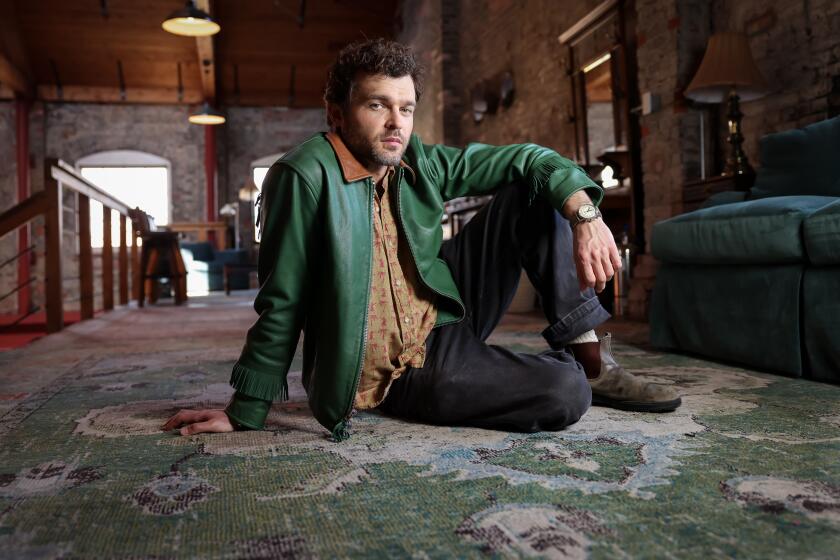Getty’s Barbara Kruger project is a ‘Values’ judgment.

- Share via
Artist Barbara Kruger posed four key questions to high school students: Whose values? Whose justice? Whose fears? And whose hopes?
The answers now hang as 48 panels covering two walls inside the Getty Museum, on display through August. The point of asking such open-ended questions, Kruger said, was to encourage students to think about the world around them and the daily problems they encounter. More than 400 students collaborated on the project, titled “Whose Values?”
Every year the museum’s education department collaborates with an artist on the Getty Artists Program. For its fifth year, the program selected Kruger, the American Conceptual artist known for merging found images with declarative text to confront social constructions.
In past years, artists worked with different audiences. Kruger took the opportunity to work with public high school students and teachers. Beginning in November, she led weekly classroom meetings with 11th- and 12th-graders from Chatsworth Charter High School and Grover Cleveland Charter High School in Reseda.
“This is what I care about: that students feel engaged with the world around them and the issues they experience every day,” Kruger said.
In the meetings, Kruger directed discussions with the students about values, justice, fears and hopes. After many conversations, students portrayed their thoughts in various media, and their combined art led to the creation of the Getty panels.
Afrah Shah, who’ll soon be a senior at Cleveland, said the chance to work with Kruger was empowering.
“We don’t get to have these conversations often,” Shah said. “I think it’s important to have these discussions.”
Five students worked together to create a letter “S” in the phrase “Whose Fears?” The panel has a painted image of a girl covering her eyes with the written words “failure, rejection, abuse,” which represents some of the students’ fears.
Another panel — the “P” in “Whose Hopes?” — looks as though it’s a chalkboard placed among the other letters. Chalked around the “P” are the hopes of seven students written out. One of the many statements reads, “I hope for equality.”
An interactive exhibition accompanying the students’ installation allows visitors to answer Kruger’s questions with comment cards and post them on a nearby wall. Those unable to respond to Kruger’s questions at the Getty Center can answer them on social media sites with the hashtag #whosevalues.
“It’s pretty profound. The installation intersects many voices and perspectives from a diverse group of people,” said Cathy Carpenter, education specialist at the Getty. She added, “Being displayed in the Getty makes the artwork that much more powerful.”
The finished installation may be powerful, Kruger said, but the most gratifying part for her was the process. The most fulfillment came from the time spent collaborating and creating with students, she said.
Kelly De Leon, a recent Grover Cleveland graduate who worked on the project, appreciated having such a noted artist guide them through the process, providing input and critiques.
“It’s a good thing to have the program available because it’s a learning opportunity,” De Leon said.
Added Carpenter: “A successful project is when we’ve been able to help the artist do something they may not have been able to do by themselves.”
More to Read
The biggest entertainment stories
Get our big stories about Hollywood, film, television, music, arts, culture and more right in your inbox as soon as they publish.
You may occasionally receive promotional content from the Los Angeles Times.










